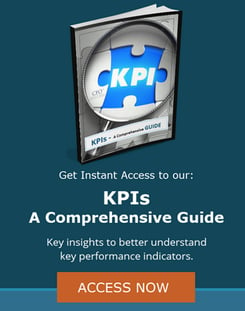 These days there are many facets of technology spending to evaluate – everything from software subscriptions and ongoing infrastructure to new AI investments and increasing security costs. Unfortunately, this landscape can quickly become a cost quagmire for less financially experienced CEOs and business owners. Without a strong background in accounting/finance, these kinds of leaders can become distracted by tech solutions that promise big results and have even bigger price tags.
These days there are many facets of technology spending to evaluate – everything from software subscriptions and ongoing infrastructure to new AI investments and increasing security costs. Unfortunately, this landscape can quickly become a cost quagmire for less financially experienced CEOs and business owners. Without a strong background in accounting/finance, these kinds of leaders can become distracted by tech solutions that promise big results and have even bigger price tags.
So, how do you keep technology spending in check? The key is to think like a CFO!
Taking a CFO’s perspective on expense management in the following ways can help to focus the company’s technology utilization while curbing unnecessary spending:
Align IT Usage with Business Goals
All technology investments should directly support overall business goals and strategic objectives. Therefore, technology spending must demonstrate clear business benefits to justify its cost. Any spending that funds leadership’s pet projects or some other tangential purposes should be eliminated.
Ask: “How does it support key business goals?”
Implement Strict Budgeting
An organization’s IT budget should be detailed enough to include both current technology-related expenses as well as projected future expenses. Then, this budget needs to be regularly compared against spending to evaluate how budgeted figures compare to actual expenses. Where differences exist, the budget needs to be reevaluated to assess whether it needs to expand or contract for the coming fiscal quarter or year. Overspending indicates a need to reassess the expected return on that technology expense, while underspending indicates an opportunity to free up funds for use elsewhere.
Ask: “What is it actually costing?”
Audit IT Spending Regularly
Periodically audit technology-related spending to look for opportunities to eliminate waste. Even when spending falls within designated amounts there is always the potential for budget waste to occur if a company is paying for technology access or infrastructure that it no longer needs. As finance and accounting roles within the company evolve ensure that the organization’s tech utilization keeps pace, paring away at what’s no longer necessary as you go.
Ask: “Do we still need this?”
Prioritize Spending Based on ROI
Focus spending on what can offer the highest Return on Investment (ROI) first to get the most mileage out of your technology investments. Then, evaluate if/when it makes sense to move forward with projects that are expected to have a lower, but still positive ROI. Keep tabs on how well these technology investments are performing relative to their expected return and leverage this information when questions around future spending arise to inform ongoing strategic decision making.
Ask: “What kind of return is it expected to offer?”
Negotiate Vendor Contracts
Review vendor contracts regularly to ensure you are still paying a fair rate for what you are receiving or using. If you feel that you are overpaying, this is something you will want to address to help preserve the relationship while keeping your organization in a beneficial cash position.
Remember, your technology vendors want to keep your business, which means that if better deals are available elsewhere, you can likely go to them with this information to renegotiate. Bring supporting information about comparable offerings through other vendors and be ready to respectfully discuss rates to try to find a better deal. Where pricing is firm, it’s possible that they may be willing to offer more favorable payment terms or bundle additional services to help keep your business.
Ask: “Is this the best deal we can get?”
Monitor Recurring Expenses Closely
Closely monitor recurring expenses like software subscriptions to ensure they are truly needed, and you’re not overpaying for what you’re using. The most common ways that organizations overpay for services are by maintaining more licenses than they need for their employees that are actively using the software or paying for features that they don’t need.
Audit who is using which technology platform and what their usage looks like. If you’re paying for seats for every employee that could need access to the system at some point but most of your employees are rare or occasional users, it may make sense to pay for fewer users and consolidate usage of that platform to one team or a key group of employees.
Similarly, paying for the highest level of a technology solution when a lower tier plan will suffice doesn’t make sense either. Instead, carefully analyze which features are necessary and which are being routinely used and then downgrade your subscription to save on costly premium features that are going unutilized.
Ask: “Do we need this many users or these added features?”
Train Staff Well
As much as IT spending is about the digital pieces, it’s also about the people involved. One of the best ways that leadership can control technology expenses is by ensuring that staff are properly trained to best optimize technology usage. Without the right people in place to operate the software and hardware involved, that technology won’t provide any value to the business. It’s like the old saying, “A hammer can’t build a house without anyone to swing it.”
Be willing to devote a portion of the budget to training so that staff can get up to speed on new technology more quickly and discover ways to better utilize existing technology for greater efficiency or output.
Ask: “Does staff know how to use it effectively?”
Utilize Cloud-Based Solutions
Look for cloud-based versions of the technology you need. Often, software that operates in the cloud versus requiring in-office infrastructure is more affordable upfront as well as on an ongoing basis. This can be a boon for startups, small businesses, and slower growth companies because it frees up capital to spend in other areas that act as growth levers.
Ask: “Is it available in the cloud?”
Use Open-Source Software
Use open-source software, where appropriate, instead of proprietary software to save on technology costs. Obviously, this is not always going to be an option for every software, nor is it going to be the right approach for every business application. However, when it is a possibility, consider going the open-source route to save significantly on technology costs.
Ask: “Do we need proprietary software?”
Technology spending under the CFO role is evolving. In small to mid-market companies, this area of cost management is under the CFO. However, in companies with greater scale that responsibility lands on the CIO (Chief Information Officer) because it is a more complex function. In this instance the CFO will work in close partnership with the CIO.
If your company doesn’t have in-house financial leadership, we can help! Our team of consulting CFOs can provide ongoing part-time CFO services as well as short-term financial leadership solutions for as much or as little time as you need. We have experience working with companies in all stages of business across numerous verticals. Contact us to find out more about how our fractional CFOs can lend their expertise to your organization!





